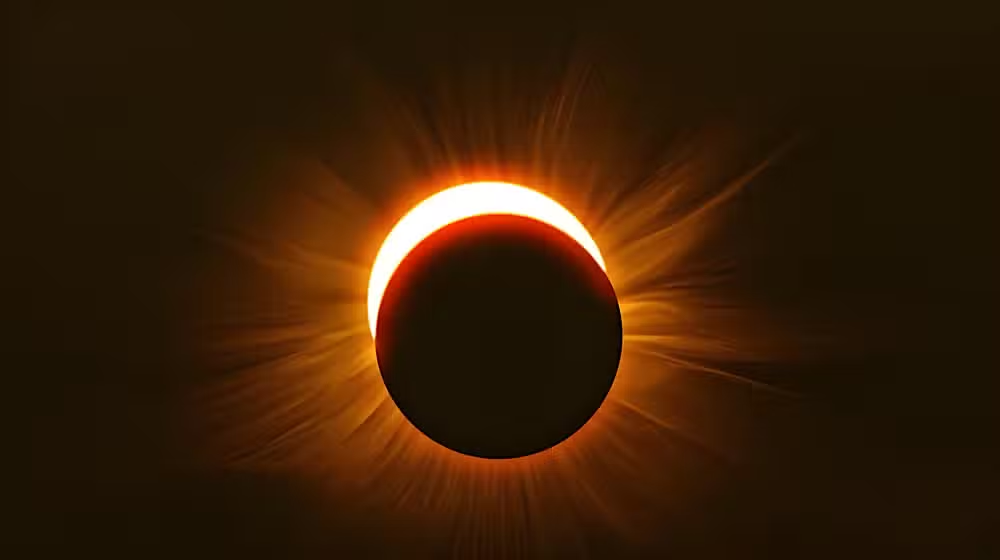The year 2025 will witness two solar eclipses, offering skywatchers across different continents an opportunity to observe these fascinating celestial events.
The first solar eclipse will take place on March 29, 2025, and will be visible in certain parts of Europe, Asia, North America, South America, and the Atlantic Ocean. It will not be visible in Pakistan or India.
The second solar eclipse of the year is scheduled for September 21, 2025, and will be observable in other parts of the world.
This article provides a detailed guide to both eclipses of 2025, including visibility locations, eclipse types, and safety tips for viewing.
What is a Solar Eclipse?
A solar eclipse occurs when the Moon moves between the Sun and Earth, blocking some or all of the Sun’s light. There are four main types of eclipses:
- Total Solar Eclipse: The Moon completely covers the Sun, turning day into night for a few minutes.
- Partial Solar Eclipse: The Moon partially covers the Sun, creating a crescent-shaped Sun.
- Annular Solar Eclipse (Ring of Fire): The Moon covers the center of the Sun but leaves a bright ring visible.
- Hybrid Solar Eclipse: A rare type that shifts between total and annular, depending on the observer’s location.
March 29, 2025 – The First Solar Eclipse of the Year
The March 29, 2025, partial eclipse will be visible in:
- Europe (parts of Spain, France, Germany, and the UK)
- Eastern North America (Canada and parts of the United States)
- Western Africa
- Northern Asia
Pakistan and India will not be able to see this eclipse.
- In Spain, the eclipse will peak around 11:40 AM local time, with about 30% of the Sun covered.
- In Canada, the eclipse will be visible at sunrise, offering a dramatic sight.
- In the UK, the maximum coverage will be around 40% in northern areas.
September 21, 2025 – The Second Solar Eclipse
The second solar eclipse of 2025 will be visible in:
- Oceania (New Zealand will experience the highest coverage)
- Antarctica (limited accessibility)
- Southern Australia (less coverage than in New Zealand)
- In New Zealand, up to 73% of the Sun will be obscured during the morning hours of September 22 (local time).
- The magnitude of this eclipse will reach 0.855, meaning 85.5% of the Sun will be covered in some locations.
Observing a eclipse requires proper eye protection to avoid permanent damage.
Always wear ISO 12312-2 certified eclipse glasses. Never look directly at the Sun without proper protection.
A pinhole projector can project an image of the eclipse onto a flat surface. Do not use regular sunglasses, CDs, or smoked glass to view the eclipse. These methods do not provide adequate protection.


